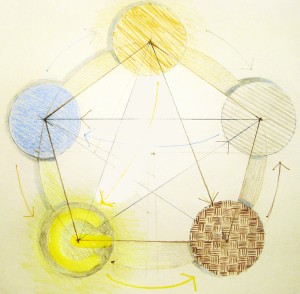About
The faint of heart avoid brand new, high-tech architectural materials like the plague. No one knows for certain how well they will work, or for how long. And when materials or material assemblies fail, the consequences can be anything from mildly irritating to utterly catastrophic. Architects and owners tend to shy away from materials that haven’t been used in construction for a decade or so; new technology is tested in labs but is untested by time, and it’s typically expensive. It takes time to build the industrial economies of scale that come from widespread use, and the learning curve for those who design with new products as well as those who build with them further slows the process down. Innovation also comes with the very real risk of litigation as a consequence of any failure that may occur.
While I acknowledge the difficulties, I’d like to make a case for fearless experimentation with materials, fabrication, and construction. If we can find materials that do less (or no) harm to the environment, are stronger, lighter and more durable, and look insanely cool, then we should use them! Or at least we ought to find out how and when we should use them (let’s not get reckless). To that end, I have created ARCHITERIALS.com: a site that provides information about materials and technology and will, I hope, connect people who are developing biopolymers, digital fabrication techniques, solid-state lighting, thermochromatic inks, etc. with people who are interested in working with them. I anticipate that this site will be frequented by designers, architects, artists, developers, greenies, materials scientists, the curious, and Brad Pitt.
While I was thinking about a way to organize ARCHITERIALS, I came across the Wu Xing, or the Five Elements, also known as the Five Stages, Phases, or Movements. Wu Xing is “an ancient mnemonic device … used for describing interactions and relationships between phenomena” (Wikipedia). The idea is that pretty much everything in the physical world shares characteristics with either wood, fire, earth, metal, or water. These five elements are constantly creating or destroying each other – wood feeds fire, fire melts metal – and energy flows. As evidenced by the hash I made of the diagram at the top of the page while trying to figure out how the system works, I’m less interested in the precise order of these cycles than I am in how this might be a great way to understand and categorize materials. Wu Xing is why you will find plastics and glass in the “wood” category, and textiles listed under “water” (among other eccentricities) across the site.
ARCHITERIALS.com presents products that are new, interesting, and useful; projects that push materials to their edge; as well as projects that re-use or re-purpose materials in unexpected ways. If you have used a particular material, please comment about the experience and share what you know! If you are developing a project or a experimenting with something and you’d like to see it featured on the site, then please check out the Submissions page for details on how to do that.
Thanks for stopping by! Please follow @ARCHITERIALS on Twitter for updates on the latest and visit the site again soon!
Hearts,
alli.dryer [at] architerials [dot] com
PS – if you find any information on the site that doesn’t jive please don’t hesitate to let me know via a comment, tweet, or email!
Cited:
Wikipedia contributors. “Wu Xing.” Wikipedia, The Free Encyclopedia. Wikipedia, The Free Encyclopedia, 24 Jan. 2010. Web. 27 Jan. 2010.









Dear Ali,
I am so impressed! The little girl who drew houses is now designing and writing eloquently about them. Your website engages and brilliantly explains (with humor) new technologies in a way that even I, a neophyte, can comprehend.
There must have been something in the polymer pipes that delivered water to Sandpiper Circle, because all of you are enjoying early success!
If you come to Chicago, please call us, we’d love to see you!
Love,
Stefanie
Leave a Wordpress Comment: